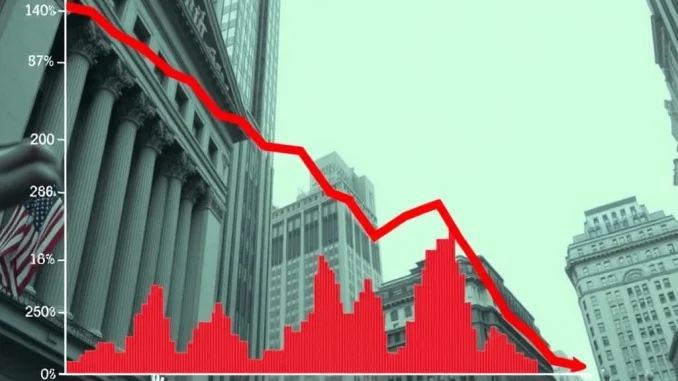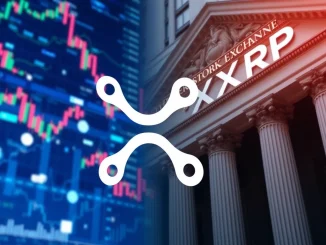
Cryptocurrency enthusiasts and investors are closely monitoring the pulse of the market, and recent data reveals a noteworthy shift in the U.S. spot Bitcoin ETF landscape. On March 31st, these ETFs collectively experienced a significant net outflow of $60.44 million. This marks the second consecutive trading day of net negative flow, prompting questions about investor sentiment and potential market corrections. Let’s delve into the details of these Bitcoin ETF outflows and understand what they might signify for the future of Bitcoin and the broader crypto market.
What’s Driving the Recent Spot Bitcoin ETF Outflows?
According to insights from Trader T (@thepfund) on X, the spot Bitcoin ETF market witnessed a notable change in investor behavior at the end of March. While the initial launch of these ETFs was met with massive inflows, attracting billions in assets, recent sessions have painted a different picture. The $60.44 million net outflow on March 31st raises eyebrows, especially as it follows another day of outflows, suggesting this isn’t just a one-off occurrence. But what could be the underlying reasons for this shift?
- Profit Taking: After a period of significant Bitcoin price appreciation, some investors might be taking profits, leading to outflows from ETFs.
- Market Volatility: Increased volatility in the crypto market can trigger risk-averse investors to reduce their exposure, resulting in ETF outflows.
- Macroeconomic Factors: Broader economic uncertainties, interest rate hikes, or inflation concerns could influence investment decisions, pushing investors towards safer assets or simply reducing overall investment in riskier assets like Bitcoin.
- Fund-Specific Dynamics: Outflows from specific ETFs might be due to fund-specific factors, such as management fees, perceived performance, or investor sentiment towards the fund provider.
It’s crucial to remember that ETF flows are dynamic and influenced by a multitude of factors. While two consecutive days of outflows might seem concerning, it’s essential to analyze the trend over a longer period to draw definitive conclusions.
Analyzing Individual ETF Performance: Who’s In and Who’s Out?
To get a clearer picture of the ETF outflows, let’s break down the performance of individual ETFs on March 31st. The data reveals a mixed bag, with some ETFs experiencing outflows while others saw inflows or no change.
| ETF Provider | Ticker | Net Flow (USD Million) |
|---|---|---|
| WisdomTree | BTCW | -$32.50 |
| ARK Invest | ARKB | -$23.18 |
| Bitwise | BITB | -$19.87 |
| BlackRock | IBIT | +$15.16 |
| Other ETFs | – | No Change |
As the table illustrates, WisdomTree’s BTCW ETF experienced the largest outflows, followed by ARK Invest’s ARKB and Bitwise’s BITB. Interestingly, BlackRock’s IBIT ETF stood out as the only one to record a net inflow, attracting $15.16 million. The remaining ETFs held steady with no changes in their holdings on March 31st. This divergence in ETF performance highlights that investor sentiment can vary significantly across different ETF offerings.
Investment Implications of Bitcoin ETFs: Navigating the Current Landscape
The emergence of Bitcoin investment via spot ETFs has democratized access to Bitcoin for a wider range of investors. However, understanding the nuances of ETF flows is crucial for making informed investment decisions. Here are some key takeaways for investors to consider:
- Monitor ETF Flows: Keep an eye on daily and weekly ETF flow data as an indicator of market sentiment and potential price movements. Significant and sustained outflows could signal bearish trends, while consistent inflows might suggest bullish momentum.
- Diversification Matters: Don’t put all your eggs in one basket. Diversify your crypto portfolio and investment strategies. Reliance solely on ETF investments might not be the most prudent approach.
- Long-Term Perspective: Bitcoin and crypto investments are inherently volatile. Adopt a long-term investment horizon and avoid making impulsive decisions based on short-term market fluctuations or a few days of ETF outflows.
- Understand ETF Differences: Each ETF has its own nuances, including management fees, tracking error, and holdings. Research and understand the specific characteristics of different ETFs before investing.
Are Crypto ETFs Still a Viable Investment?
Despite the recent crypto ETF outflows, it’s premature to conclude that Bitcoin ETFs are losing their appeal. The initial wave of inflows was exceptionally strong, and some level of profit-taking and market correction is natural. The fact that BlackRock’s IBIT still saw inflows on March 31st suggests continued institutional interest in Bitcoin.
The long-term viability of Bitcoin ETFs as an investment vehicle remains robust. They offer a regulated and accessible way for both institutional and retail investors to gain exposure to Bitcoin without directly holding the cryptocurrency. However, like any investment, they come with risks and rewards. Staying informed, understanding market dynamics, and maintaining a balanced investment strategy are key to navigating the evolving landscape of Bitcoin ETFs and the broader crypto market.
Conclusion: Staying Informed in the Dynamic World of Bitcoin ETFs
The recent $60.44 million net outflow from U.S. spot Bitcoin ETFs on March 31st serves as a reminder of the dynamic and often unpredictable nature of the cryptocurrency market. While these outflows warrant attention, they should be viewed within the context of broader market trends and individual ETF performance. For investors, the key takeaway is the importance of continuous monitoring, informed decision-making, and a long-term perspective when navigating the exciting yet volatile world of Bitcoin and crypto investments. By staying informed and adaptable, investors can better position themselves to capitalize on the opportunities and manage the risks associated with this evolving asset class.



